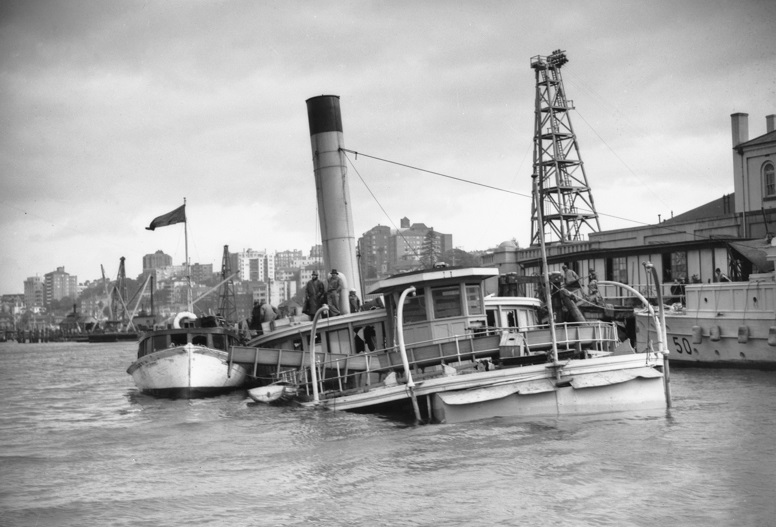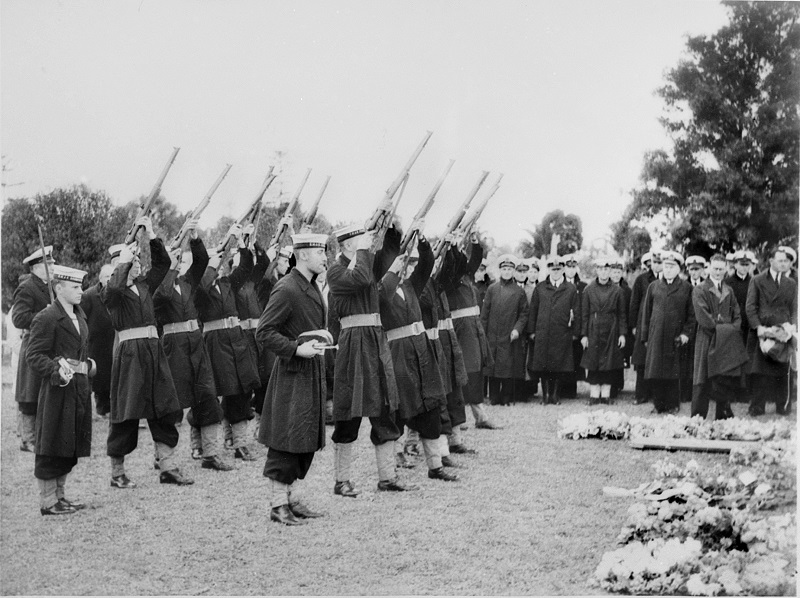80 years since midget submarine attack on Sydney
In May 1942 fears of a Japanese invasion were widespread after the forces of Imperial Japan swept through Southeast Asia and the Southwest and Central Pacific.
On 23 May a reconnaissance float plane was launched from a Japanese submarine and flew a mission over Sydney and confirmed the presence of Allied warships in Sydney Harbour.
On 29 May, five large I-class Japanese submarines positioned themselves off Sydney, and a second reconnaissance flight was launched early the following day, which confirmed the presence of Allied warships still in the harbour.
On the evening of 31 May three two-man midget submarines launched from their ‘mother’ submarines and headed for Sydney Harbour.
The first midget submarine to enter the harbour became trapped in an anti-submarine boom net, which stretched from George’s Head at Mosman to Green Point at South Head. With no means of escape, the crew detonated demolition charges and destroyed their vessel to avoid capture.
The two remaining midget submarines were spotted as they made their way into the harbour. One was pursued and rammed by HMAS Yandra, which then followed up with an inconclusive depth-charge attack but was damaged in the process and forced to retire for repairs. This midget submarine was later repeatedly attacked by Royal Australian Navy (RAN) auxiliary patrol vessels Sea Mist, Steady Hour and Yarroma. When this disabled vessel was later recovered (see above), it was found the crew had shot themselves rather than surrender.
The other midget submarine was unsuccessfully fired upon by the cruiser USS Chicago and corvette HMAS Geelong. This midget submarine shortly after fired its two torpedoes at the Chicago but missed. One torpedo ran aground on Garden Island without exploding, while the other passed under a Dutch submarine and hit the sea wall where the RAN depot ship HMAS Kuttabul was moored.
Nineteen Australian and two British naval personnel lost their lives when HMAS Kuttabul sank, and 10 other sailors were wounded.
The midget submarine responsible escaped from Sydney Harbour, but failed to rendezvous with its waiting ‘mother’ submarine.
All six Japanese submariners lost their lives in the attack on Sydney Harbour, and no significant Allied warship was destroyed in this attack.
The two midget submarines lost in Sydney Harbour were raised and both crews’ bodies were cremated at Sydney’s Eastern Suburbs Crematorium with full naval honours. Their ashes were repatriated to Japan through a neutral party.
A composite of these two recovered midget submarines was put on display and later toured around Australia to raise money for sailor’s charities. This composite was later installed at the Australian War Memorial in Canberra.
In 1968 the mother of one of the Japanese submariners travelled to Australia to visit the site of her son’s death. To commemorate her son’s memory she scattered cherry blossoms in the water where her son’s midget submarine had been found.
In November 2006 the final resting place of the missing Japanese midget submarine which escaped from Sydney Harbour was located by recreational scuba divers. This was on the seabed about five kilometres offshore of Sydney’s Northern Beaches near Bungan Head, Newport.
Most of the sailors killed aboard HMAS Kuttabul were interred at Rookwood cemetery in Sydney.
Eight of the casualties were interred in the Royal Australian Navy’s Church of England Naval Plot at Rookwood, while five were interred in the RAN’s Catholic Naval Plot at Rookwood. One sailor is interred at the Sydney War Cemetery, also located at Rookwood. Another was cremated and his details are recorded on Panel 1 of the NSW Cremation Memorial in Sydney.
Another was interred in a Jewish plot in Adelaide’s West Terrace and two others are also thought to have been returned to their home towns, one to the Footscray Cemetery in Melbourne, and another to the South Maitland (Kurri Kurri) Cemetery near Newcastle.
But what they all have in common is that they are cared for, in perpetuity, by the Australian Government through the Office of Australian War Graves, which is an ever present reminder of our enduring commitment as a member nation of the Commonwealth War Graves Commission.

Above: the partly submerged HMAS Kuttabul following the attack

Above: Funeral service for Kuttabul casualties

Above: Salvaging of midget submarine caught in boom net.
